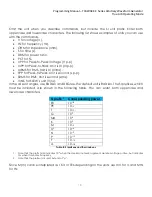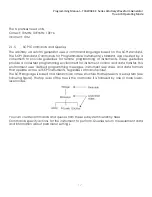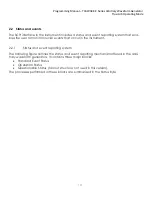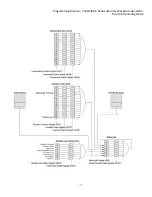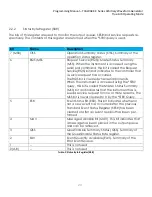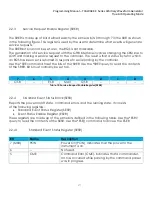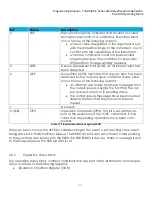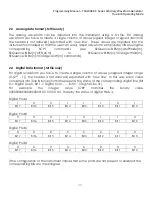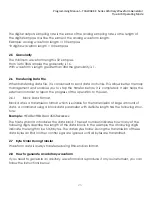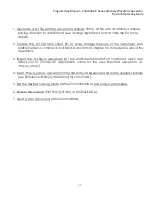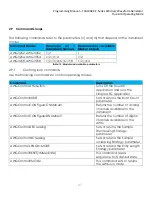
Programming Manual
–
T3AWG3K-C Series Arbitrary Waveform Generator
True-Arb Operating Mode
12
Symbol
Meaning
<Header>
This is the basic command name. If the header ends with a question mark,
the command is a query. The header may begin with a colon (:) character.
If the command is concatenated with other commands, the beginning
colon is required. Never use the beginning colon with command headers
beginning with a star (*).
<Mnemonic> This is a header subfunction. Some command headers have only one
mnemonic. If a command header has multiple mnemonics, a colon (:)
character always separates them from each other.
<Argument>
This is a quantity, quality, restriction, or limit associated with the header.
Some commands have no arguments while others have multiple arguments.
A <space> separates arguments from the header. A <comma> separates
arguments from each other.
<Comma>
A single comma is used between arguments of multiple-argument
commands. Optionally, there may be white space characters before and
after the comma.
<Space>
A white space character is used between a command header and the
related argument. Optionally, a white space may consist of multiple white
space characters.
Table 4: Message symbols and their meanings
Commands
Commands cause the instrume
nt to perform a specific function or change one of
the settings.
Commands have the structure:
[:]<Header>[<Space><Argument>[<Comma><Argument>]...]
A command header consists of one or more mnemonics arranged in a hierarchical or tree
structure. The first
mnemonic is the base or root of the tree and each subsequent mnemonic
is a level or branch of the previous one. Commands at a higher level in the tree may affect
those at a lower level. The leading colon (:) always returns you to the base of the command
tree.
Queries
Queries cause the instrument to return status or setting information.
Queries have the structure:
[:]<Header>?
[:]<Header>?[<Space><Argument>[<Comma><Argument>]...]

















